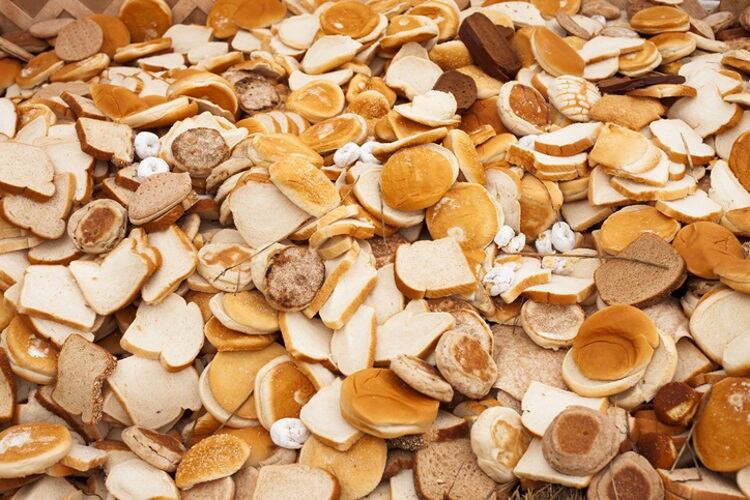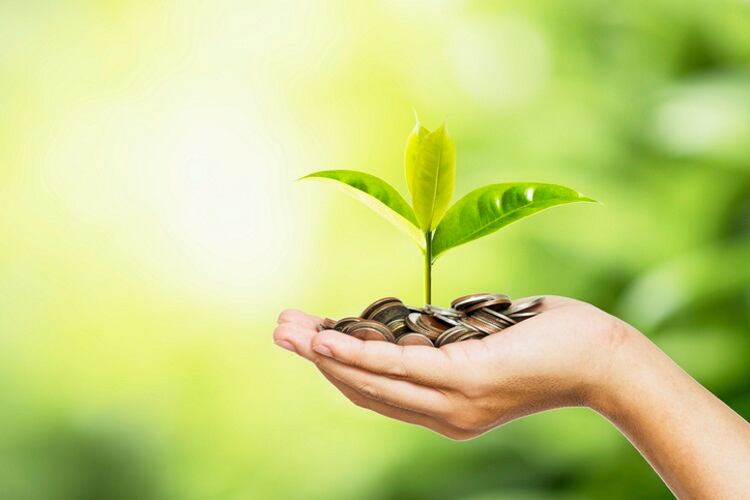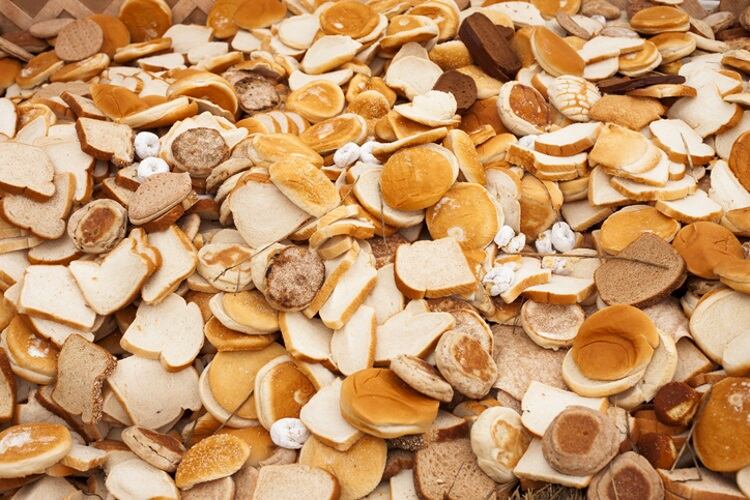Rather than relegate unsold breads, bagels, muffins and pastries to the bin, each day after closing, the bakery-café chain’s employees box them up for local non-profit organisations to distribute to those in need across the US. In an average year, Panera partners with over 3,500 non-profits through the Day-End Dough-Nation programme.
“I feel good about having fresh items available for our customers while helping out those in need in our community,” said Udo Freyhofer, manager of an outlet in Pensacola, Florida.
While this action certainly does rate high on the feelgood scale, today it’s become a critical step in protecting the planet.
The cost of bread waste
A doctoral project by Swedish researcher Pedro Brancoli found the global food system is a major driver of a myriad of environmental impacts – particularly those related to climate change, biodiversity loss and depletion of freshwater resources – aggravated by the considerable waste of food throughout the supply chain.
Brancoli’s study is the first to quantitively map the results of waste.
It found that bread is the biggest culprit in all environmental impact categories analysed, calculated at a whopping 80,500 tonnes of bread annually in Sweden alone, the equivalent of 8kg per person per year. The greatest contributor is the retail sector (in terms of the total mass of waste and the economic costs incurred by the supermarket). Although other parts of the supply chain account for relatively higher waste generation, retailers are particularly important because of their influence both downstream and upstream in the supply chain.
“This came as a surprise, as bread has not been considered to account for any significant waste flow at retailers before,” said Brancoli, who recently received his doctorate in Resource Recovery at the University of Borås, Sweden.
There is an upside...
But there is a silver lining to this growing challenge, he added.
In fact, bread waste could actually do more good for the environment and the economy if it were instead transformed into new products.
“We have made calculations of the amount of bread waste, analysed the reasons behind it, and suggested solutions. Then we evaluated this in relation to potential environmental savings,” he said.
The study found the take-back agreement between suppliers and retailers is a risk factor for high waste generation – so, it’s logical to suggest a change to current business models. However, said Brancoli, the return system between bakeries and retailers means bread waste is not contaminated with other food waste and provides a golden opportunity.
“The current bread distribution system proved to be a significant source of bread waste. But we were also able to show that the bread that is wasted actually has a significant value.”
Obviously, the first step is to prevent waste from occurring at the beginning of the cycle by identifying risks and developing effective strategies. However, no matter how efficient the process, there will always be some waste along the supply chain.
A major plus is the fact that the current return system between bakeries and retailers enables a segregated flow of bread waste that is not contaminated with other food waste products.
According to Brancoli, this provides an opportunity for alternative valorisation and waste management options.
Assessing impact
His study assessed the lifecycle of 1kg of surplus bread to calculate the environmental impacts of both alternative and existing waste management options. Eighteen impact categories were assessed using the ReCiPe methodology that transforms the long list of life cycle inventory results into a limited number of indicator scores to calculate the relative severity on an environmental impact category.
ReCiPe is the method used for a life cycle impact assessment (LCIA), developed in 2008 through the cooperation of RIVM, Radboud University Nijmegen, Leiden University and PRé Sustainability.
The results support a waste hierarchy where reduction at the source has the highest environmental savings.
This is followed by the use of surplus bread as animal feed; as a donation; for beer production and for ethanol production.
Anaerobic digestion and incineration offer the lowest environmental savings, particularly in a low-impact energy system.
Ultimately, the study suggests that countries like Sweden should really make of the established return system to implement environmentally preferred options for surplus bread.
“Bread waste can be used as a raw material to produce ethanol, animal feed, beer or as a substrate to grow a protein-rich fungus that can be used as food,” said Brancoli.
“These alternatives have great potential to reduce the environmental impact … and show that bread can very well be part of a circular supply chain.”
Brancoli is planning to take his extensive research in this field further.
He is hoping to get the measures proposed for grocery stores and bakeries implemented, noting though that “more cooperation is needed between companies throughout the supply chain in order for them to see the benefits of preventing bread waste and see the value in it.
“The results can also be used as support when companies are to make investments, and by decisionmakers in their work for reduced environmental impact.”
He is also planning to investigate food waste in other parts of the global supply chain.
Study:
Prevention and valorisation of surplus bread at the supplier-retailer interface
Author: Brancoli, Pedro
University of Borås, Faculty of Textiles, Engineering and Business
ORCID iD: 0000-0002-0743-1335
2021 (English)Doctoral thesis, Sustainable development
Borås: Högskolan i Borås, 2021.
ISSN 0280-381X ; 124
URN: urn:nbn:se:hb:diva-26454ISBN: 978-91-89271-42-5 (print)ISBN: 978-91-89271-43-2 (electronic)OAI: oai:DiVA.org:hb-26454DiVA, id: diva2:1595067




